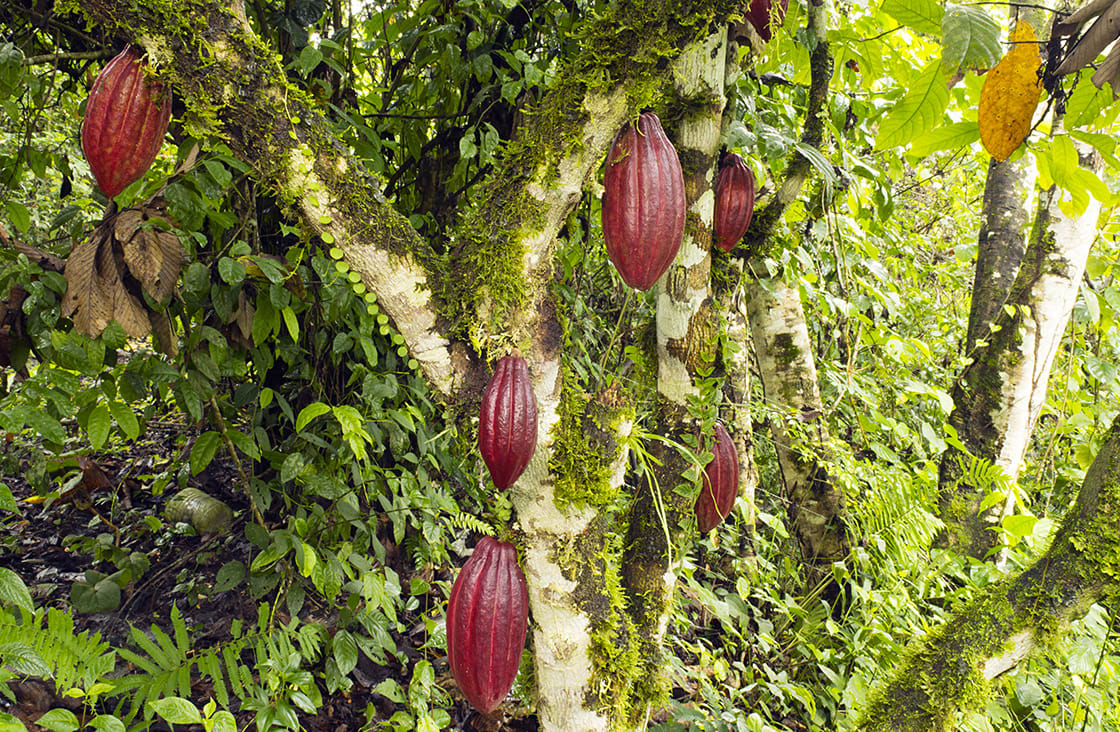B4.1 Adaptations to Environment
1/26
Earn XP
Description and Tags
Name | Mastery | Learn | Test | Matching | Spaced |
|---|
No study sessions yet.
27 Terms
Define habitat.
B4.1.1: Habitat as the place in which a community, species, population or organism lives.
Habitat: The natural home/environment of an organism that provides it the resources needed to reproduce.
List characteristics that can be used to describe a habitat.
B4.1.1: Habitat as the place in which a community, species, population or organism lives.
Geographical: The location of the habitat (latitude, longitude)
Physical: The characteristics of the habitat (landforms, bodies of water, vegetation, etc.)
Type of Ecosystem: The ecological community, including interactions with other species and abiotic factors
List the ecological levels of organization.
B4.1.1: Habitat as the place in which a community, species, population or organism lives.
Organism: An individual life form (made of at least one cell)
Population: A group of organisms of the same species at the same time
Community: Many populations (species) living and interacting with each other
Ecosystem: A location where a community interacts with each other and the environment (biotic AND abiotic factors)
Biome: A large area with common characteristics
Biosphere: The region of the planet where organisms live
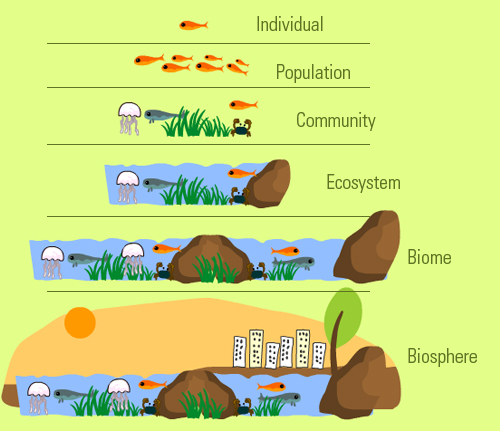
Define adaptation.
B4.1.2: Adaptations of organisms to the abiotic environment of the habitat.
Adaptation: Features of an organism that make it better suited to its environment, helping their survival.
Explain how natural selection can lead to adaptations of organisms to the abiotic environment of their habitat.
B4.1.2: Adaptations of organisms to the abiotic environment of the habitat.
Natural selection, or “survival of the fittest,” allows the organisms with features that gives them an advantage over other organisms to survive. As a result, these features that allow them to survive in their environment get passed down. Eventually this natural selection leads a species to have certain adaptations that help them survive and thrive in the abiotic environment of their habitat.
Outline the physiological, morphological and/or behavioral adaptations of sea oat to live in sand dune environments.
B4.1.2: Adaptations of organisms to the abiotic environment of the habitat.
Sea oat (Uniola paniculata) is a species of grass that lives & creates sand dunes in the eastern US coast.
Sea oat live in dry sand dune environments, so they must try to reduce water loss and absorb as much water as possible to survive.
Physiological adaptations: Sea oats physiologically are drought resistant. They close their stomata when the sand is too dry for an extended time. They thrive in full sun and can easily tolerate salt spray.
Morphological adaptations: Sea oats have narrow leaves, which reduces transpiration (evaporation). They have densely interwoven roots. This reduces sand erosion of the dunes (providing stability) and also maximizes the amount of water it uptakes.
Behavioral adaptations: Sea oats asexually reproduce and grow with nodes and rhizomes (stems). These rhizomes and nodes are at the base of the sea oat. When sand covers these shoots, they are stimulated to grow.
Outline the physiological, morphological and/or behavioral adaptations of a mangrove tree that lives in a coastal intertidal zone.
B4.1.2: Adaptations of organisms to the abiotic environment of the habitat.
Red mangroves (Rhizophora mangle) are found in tropical and subtropical areas growing along saltwater tidal zones in Bermuda, Florida, and the West Indies.
Physiological adaptations: Physiologically mangroves have roots underwater that filter the salt out of the water so that the tree has access to fresh water.
Morphological adaptations: Roots above the waterline intake oxygen, which oxygenates the roots underwater as well.
Behavioral adaptations: The mangroves drop fruits called propagule. These fruits flow in the water and orient themselves in shallow water so that the roots can grow and the tree disperses.
List abiotic variables that affect plant species distribution.
B4.1.3: Abiotic variables affecting species distribution.
pH range
Soil composition
Salinity
Water availability
Light intensity and duration
Temperature range
Outline an example of an abiotic variable that affects an animal species distribution.
B4.1.3: Abiotic variables affecting species distribution.
Abiotic variables can be a limiting factor for a species if it is outside the tolerance zone of an organism, thus impacting species distribution.
Species have adapted to tolerate an acceptable range according to their habitat. For instance, catfish take in oxygen through their skin so that they can live in oxygen-poor habitats. Other catfish burrow into wet mud to survive droughts.
Define “range of tolerance.”
B4.1.4: Range of tolerance of a limiting factor.
Range of tolerance: The range of environmental conditions (abiotic factors) a species can tolerate to survive in.
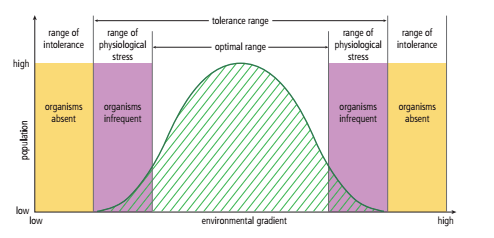
Discuss the relationship between adaptations, a species distribution and its range of tolerance for an abiotic factor.
B4.1.4: Range of tolerance of a limiting factor.
Abiotic factors can act as limiting factors when the conditions are not optimal for species survival, or when it is outside of a species’ range of tolerance. As a result, a species distribution (represented by a graph) may be lower. In order to have the optimal factors fit inside its range of tolerance, a species may adapt such that it can thrive in its environment.
Explain how one can correlate the distribution of plant/animal species with an abiotic variable.
B4.1.4: Range of tolerance of a limiting factor.
Scientists use transects to observe how organisms are distributed across a gradien of abiotic factors. They follow a path and study the amount of organisms within that quadrat (a belt transect).
Belt transects are a way to determine a species’ range of tolerance.

List and describe abiotic conditions required for the formation of coral reefs.
B4.1.5: Conditions required for coral reef formation.
Light: Coral reefs need a moderate amount of sunlight.
Light is absorbed by seawater, so some light needs to reach the coral.
Coral reefs have a mutualistic relationship with zooxanthellae. Coral reefs offer protection, and zooxanthellae photosynthesize to give coral reefs nutrients.
Too little light —> zooxanthellae cannot photosynthesize —> coral doesn’t have enough food
Too much light (UV) —> corals expel zooxanthellae —> coral bleaching
Water Depth: Corals must be in a place with a moderate amount of light.
Can live in depths <70 meters (230 ft), normally around 30 meters (98 ft)
pH: Seawater should be 8.0-8.3 (more basic, standard saltwater conditions)
Difficult to grow in acidic conditions
Salinity: Ideal range of 23-42 ppt
Salinity is measured in parts per thousand (ppt)
Clarity (Turbidity): Corals need clear water so light can penetrate
High turbidity —> light can’t penetrate —> zooxanthellae can’t photosynthesize
Corals squashed by sediments or particles —> coral dies
Temperature: Corals thrive in warm (tropical) waters
Ideal temperature range: 16-35.5℃ (60.8-93.9℉)
Temperature range depends on how they’ve adapted (some corals are adapted to high temperatures)
Nutrients: Low nutrient water is better
Phosphorus, Nitrogen
Lots of nutrients —> algae & phytoplankton grow —> block out light for zooxanthellae & overgrow coral while competing for space
Substrate: Corals need to attract to a hard surface
Substrate: A surface where an organism can attach and/or grow
Corals are sessile
Let Diana Take Tiny Naps Please Sir
Light, Depth, Temperature, Turbidity, Nutrients, pH, Substrate
Discuss the relationship between the distribution of coral reefs and the coral’s range of tolerance to abiotic variables.
B4.1.5: Conditions required for coral reef formation.
If an abiotic variable is outside a coral’s range of tolerance, the coral reefs will have a lower distribution.
For instance, the Siderastrea radians (lesser starlet coral) adapted to living in high salinity. The Florida Bay, an estuarine area with an average depth of 5 feet (low depth) and no fresh water during dry season (hypersaline conditions of 70 ppt). High salinity and low depth is outside a coral’s range of tolerance (so the distribution would go down). As a result, the coral had to adapt to survive.
The American Samoa adapted to high temperatures. It has to survive in temperatures of ver 89.6℉, or 32℃ for multiple hours and days at a time. This would typically decrease the distribution, as it is outside the range of tolerance. However, the coral adapted to survive in high temperatures.
Define biome.
B4.1.6: Abiotic factors as the determinants of terrestrial biome distribution.
Biome: Groups of ecosystems that have the same climate and dominant communities.
State the two abiotic factors that are the principal determinants of biome distribution.
B4.1.6: Abiotic factors as the determinants of terrestrial biome distribution.
Temperature and precipitation are the two abiotic factors that are the principal determinants of biome distribution.
Interpret a climograph depicting the relationship between temperature, rainfall, and most likely biome.
B4.1.6: Abiotic factors as the determinants of terrestrial biome distribution.
A climograph is a graphical representation of basic climatic parameters at a given geographical location.
Whittaker’s climograph predicts the terrestrial biome in a location according to mean temperatures and mean precipitation.
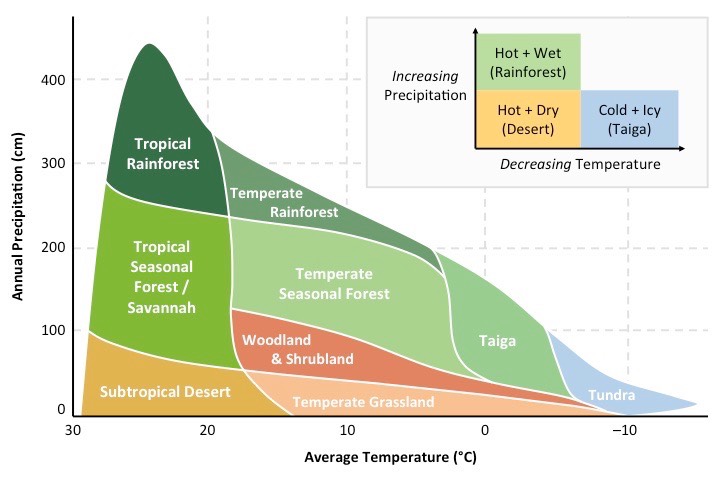
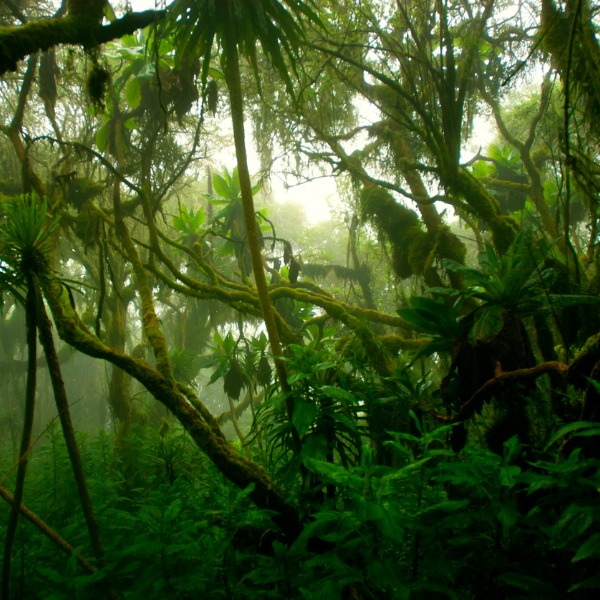
Outline climate conditions that characterize the tropical forest biome.
B4.1.7: Biomes as groups of ecosystems with similar communities due to similar abiotic conditions and convergent evolution.
Warm temperatures of around 20-25°C.
High amounts of precipitation from 2000 to 10000 mm per year.
Nutrient-poor soil
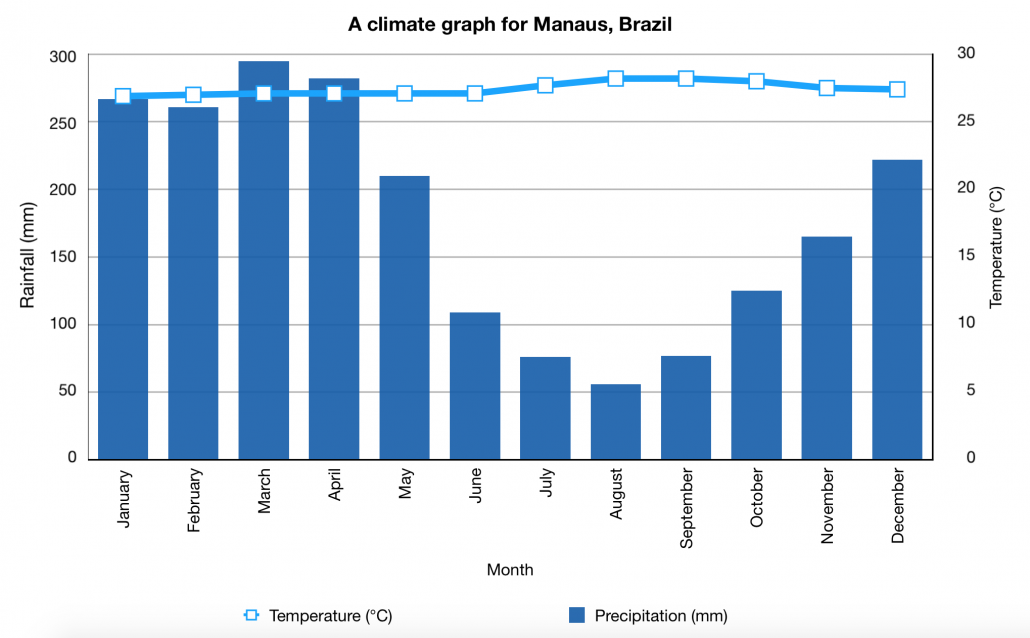
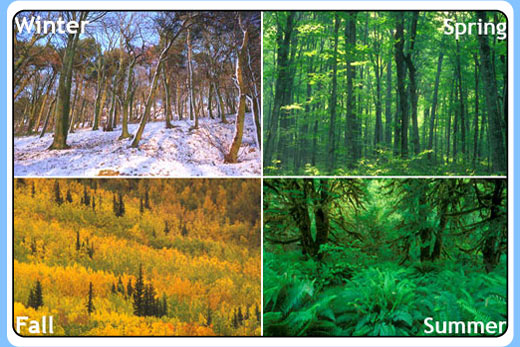
Outline climate conditions that characterize the temperate forest biome.
B4.1.7: Biomes as groups of ecosystems with similar communities due to similar abiotic conditions and convergent evolution.
No extreme temperatures.
Abundant year-round precipitation (750-1500 mm per year)
4 distinct seasons
Soil enriched by dropping leaves
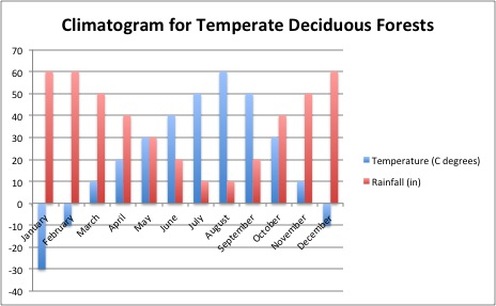
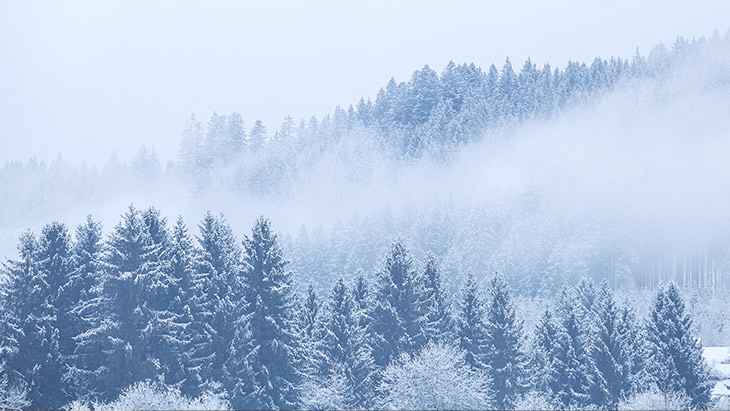
Outline climate conditions that characterize the taiga.
B4.1.7: Biomes as groups of ecosystems with similar communities due to similar abiotic conditions and convergent evolution.
Temperatures ranging from -40 to 20°C.
Relatively high precipitation in the form of snow (300 to 900 mm of precipitation per year).
Very cold winters

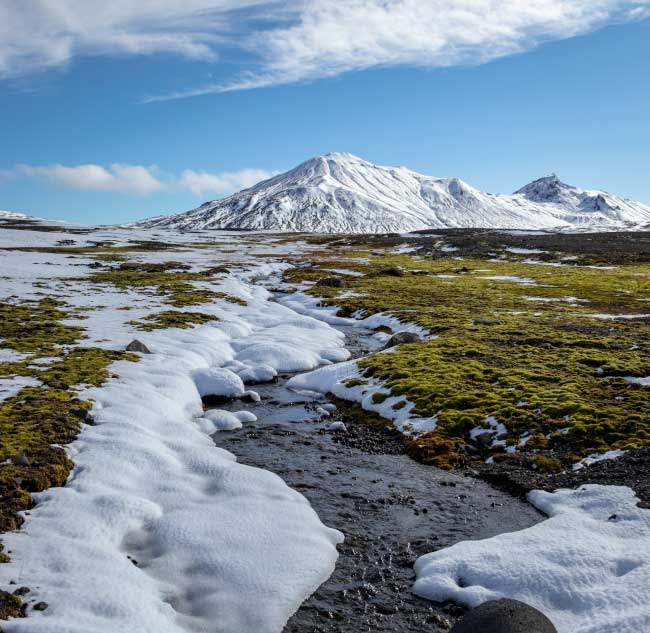
Outline climate conditions that characterize the tundra.
B4.1.7: Biomes as groups of ecosystems with similar communities due to similar abiotic conditions and convergent evolution.
Cold temperatures (between -40 and 18°C).
Little precipitation (150-250 mm per year).
Dark for long periods during the winter.
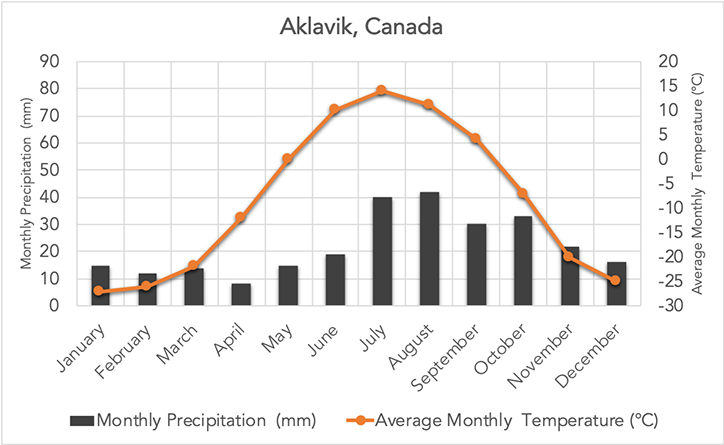
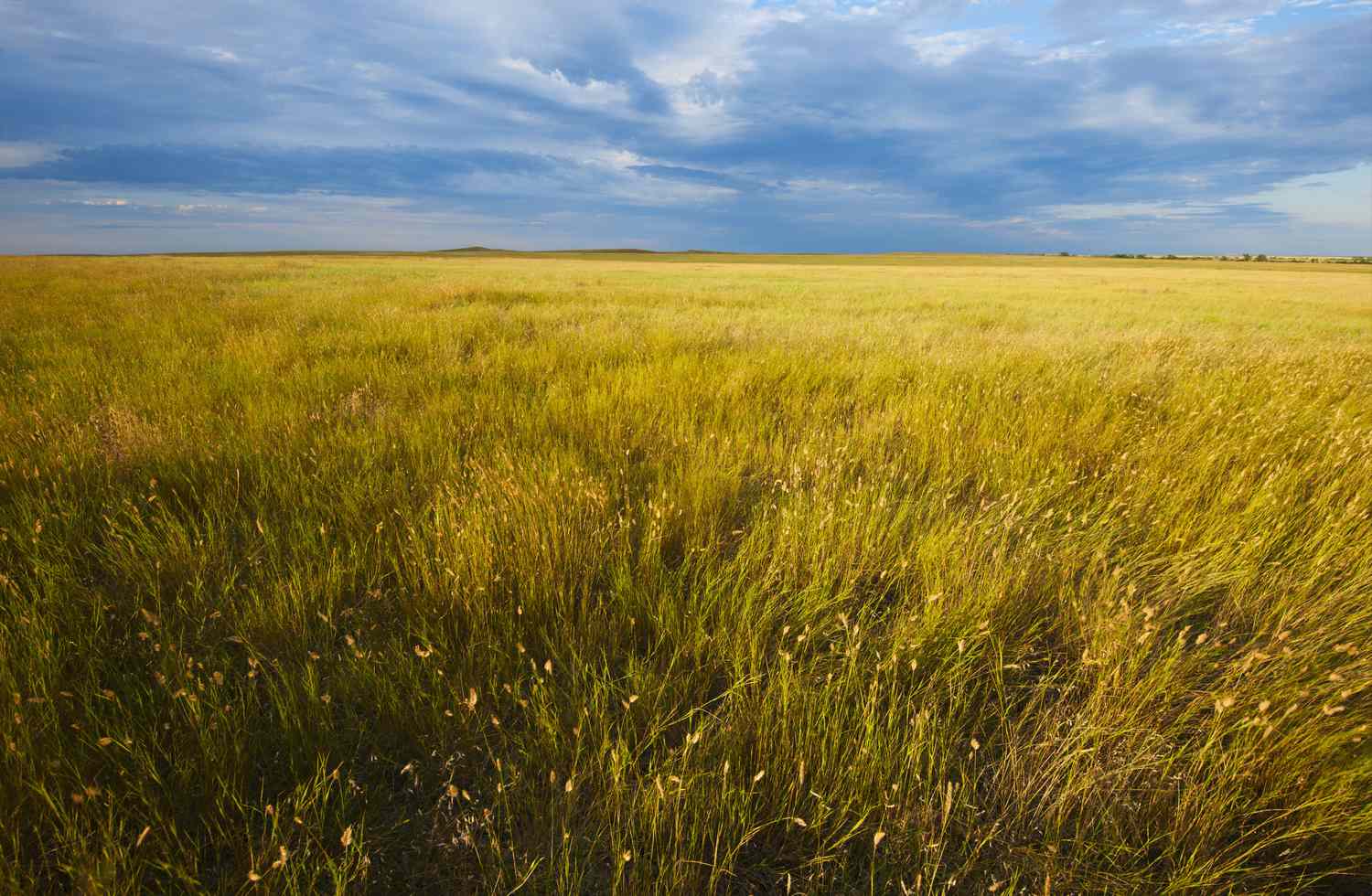
Outline climate conditions that characterize the grassland biome.
B4.1.7: Biomes as groups of ecosystems with similar communities due to similar abiotic conditions and convergent evolution.
Temperatures vary based on latitude, but the annual range is between -20°C to 30°C.
Semi-arid climate with 500-950 mm of precipitation per year.
Can have seasons (like a wet season or a dry season).

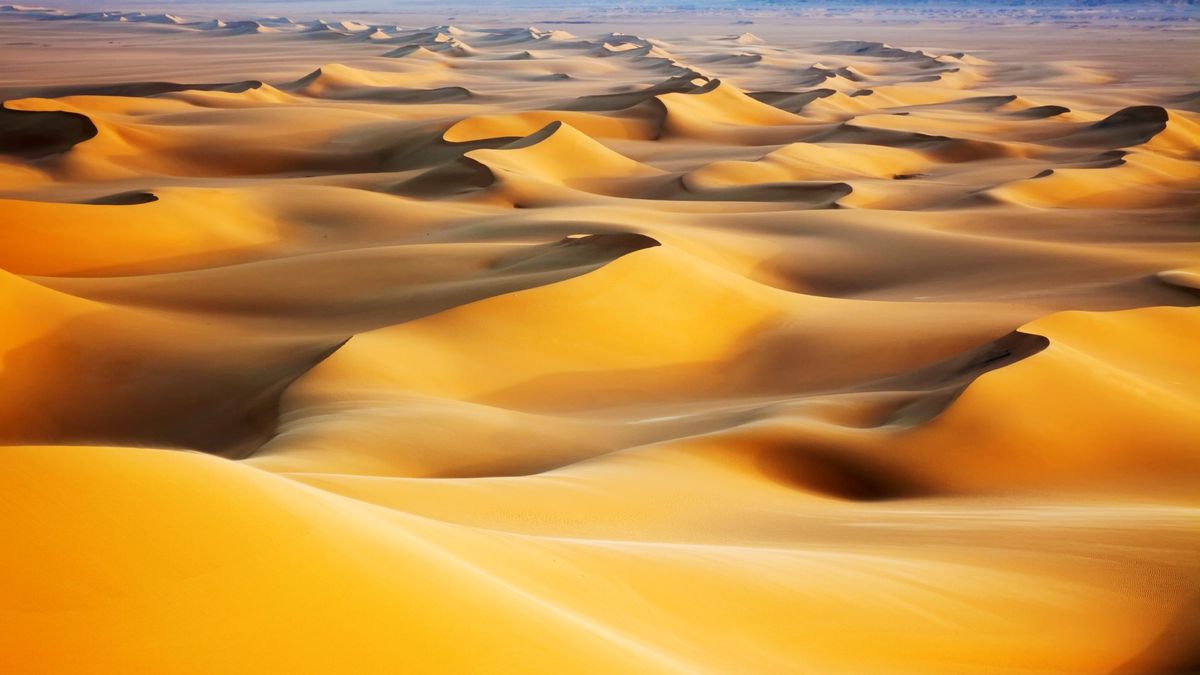
Outline climate conditions that characterize the hot desert biome.
B4.1.7: Biomes as groups of ecosystems with similar communities due to similar abiotic conditions and convergent evolution.
Hot temperatures during the daytime, but cold at night.
Very low precipitation (<300 mm per year).
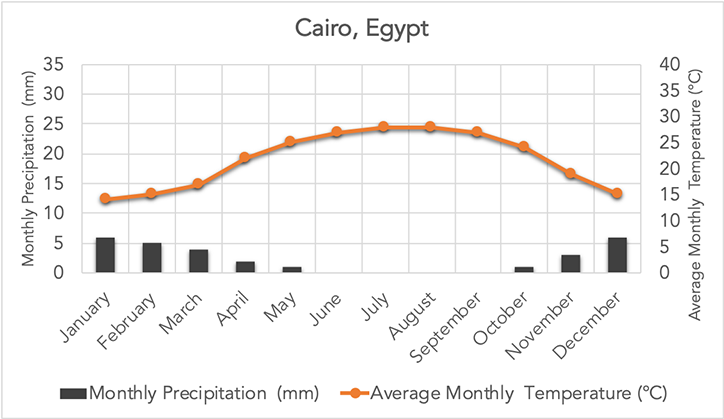
Outline the physiological, morphological and/or behavioral adaptations of an animal living in a hot desert.
B4.1.8: Adaptations to life in hot deserts and tropical rainforests.
Behavioral: Many animals in the hot desert burrow in the sand and are only active during the cooler night time to avoid the heat of the desert.
Morphological: Fennec Foxes (Vulpes zerda) have fur-covered feet so that they have greater traction on the sand and their feet are protected from the sand’s heat. They also have pale fur so that they can better camouflage with their environment.
Physiological: The Common ostrich (Struthio camelus) can pant and alter their blood flow to thermoregulate their body temperature. They can also extract moisture from their diet so that they reduce the amount of water they need to drink.
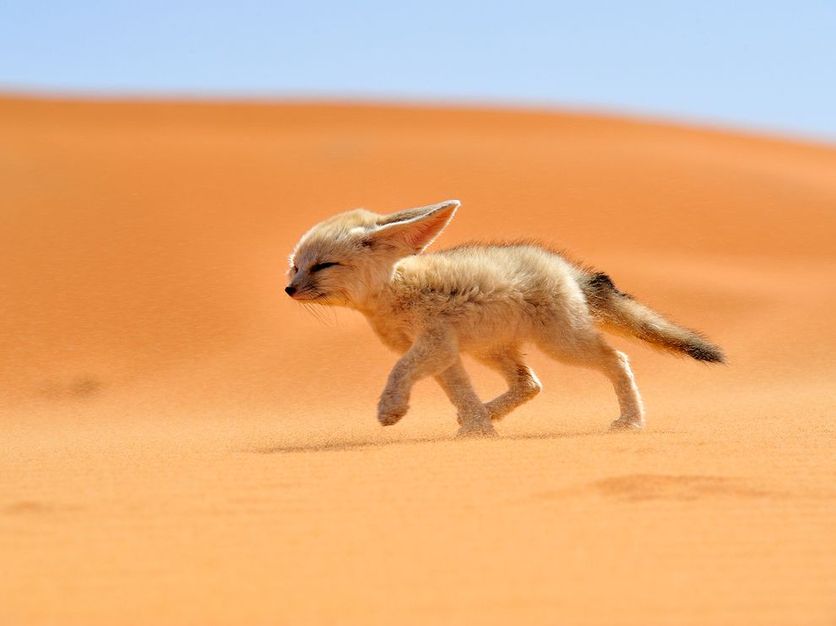
Outline the physiological, morphological and/or behavioral adaptations of a plant living in a hot desert.
B4.1.8: Adaptations to life in hot deserts and tropical rainforests.
Morphological: Most vegetation have spines for leaves to avoid being eaten.
Physiological & morphological: The Barrel cactus (Ferocactus) have a thick stem to store water. This water is used when the climate is too dry.
Physiological & morphological: The Hedgehog cactus (Echinocereus triglochidiatus) has rounded spiny stems, which protects them from herbivores. It also shades the plant’s surface to prevent water loss.

Outline the physiological, morphological and/or behavioral adaptations of an animal living in a tropical rainforest.
B4.1.8: Adaptations to life in hot deserts and tropical rainforests.
There is very high animal biodiversity.
Behavioral: The sloth (three-toed Bradypus or two-toed Cholopeus) moves very slowly to conserve energy and help digest its food. Its lack of movement allows algae to grow on them so that they can better camouflage in trees.
Physiological & Morphological: Spider monkeys (Atelidae ateles) have long limbs and a prehensile tail that helps them climb (almost like an extra limb). They also primarily eat fruits, leaves, flowers, nuts, insects, and eggs — all of which are available in the rainforest.

Outline the physiological, morphological and/or behavioral adaptations of a plant living in a tropical rainforest.
B4.1.8: Adaptations to life in hot deserts and tropical rainforests.
There is very high plant biodiversity.
Morphological & Physiological: The cocoa tree (Theobroma cacao) have drip-tips to drain excess water and large leaves to absorb maximum sunlight.
Behavioral: The strangler fig (Ficus altissima) can climb up trees to get to the sunlight. In doing so, it can strangle trees and kill them for nutrients.
